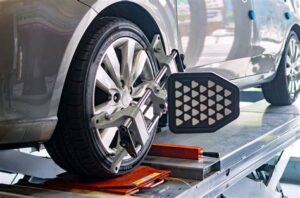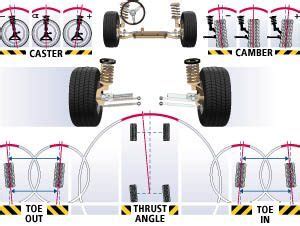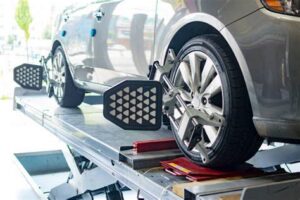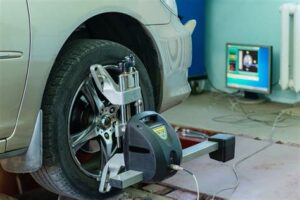How Often to Align Car
When it comes to maintaining your vehicle, few aspects are as crucial yet often overlooked as proper car alignment. Misalignment can lead not only to uneven tire wear but also to compromised handling and steering, ultimately affecting your safety on the road. In this article, we’ll delve into the importance of regular car alignment, explore how often it should be performed, and identify key factors that can influence alignment needs. We’ll also highlight the warning signs that indicate it’s time for adjustments, discuss the profound impact proper alignment has on your vehicle’s performance, and share valuable tips for maintaining alignment. Whether you’re a seasoned driver or a new car owner, understanding these aspects will ensure your vehicle remains safe and efficient for the journey ahead.
Understanding The Importance Of Car Alignment
Car alignment is a crucial aspect of vehicle maintenance that directly influences safety, handling, and tire longevity. It refers to the adjustment of a vehicle’s suspension system, ensuring that all four wheels are parallel to each other and perpendicular to the road. When your car’s alignment is off, it can lead to a range of issues, including uneven tire wear, poor steering response, and even increased fuel consumption.
Maintaining proper alignment is important not just for the life of your tires but also for the overall performance of your vehicle. A well-aligned car responds better during turns, brakes evenly, and provides a more comfortable ride. Conversely, neglecting alignment can result in significant costs over time due to the necessity of premature tire replacement and potential safety hazards.
So, how often should you check and align your car? The answer is not a one-size-fits-all; it depends on several factors. These include your driving habits, the type of terrain you drive on, and the manufacturer’s recommendations. Regular check-ups and being mindful of the signs of misalignment can help you keep your car in optimal condition and ensure a safer driving experience.
How Often To Align Car: Key Factors To Consider
Understanding how often to align your car is essential for maintaining optimal vehicle performance and longevity. There are several key factors that influence the frequency of alignment checks:
| Factor | Recommended Alignment Frequency |
|---|---|
| Mileage | Every 6,000 to 10,000 miles |
| Driving Habits | After every major driving event (e.g., road trips, off-roading) |
| Type of Terrain | More frequent alignment on rough or uneven roads |
| Age of Vehicle | Older vehicles may require more frequent checks |
| Tire Condition | Check alignment if you notice uneven tire wear |
In addition to these factors, it is wise to have your car’s alignment checked whenever you replace tires, encounter significant potholes or road debris, or notice changes in steering responsiveness. Following these guidelines will help ensure your vehicle remains safe and efficient on the road.
Signs Your Car Needs Alignment Adjustments
Regular car alignment is crucial for maintaining optimal vehicle performance and safety. Here are some how often indicators that your car may need alignment adjustments:
- Uneven Tire Wear: If you notice that your tires are wearing unevenly—more on one side than the other—it’s a strong sign that your car might be misaligned.
- Steering Wheel Off-Center: When driving straight, if your steering wheel is tilted to one side, it indicates that the wheels are not aligned properly.
- Pulling to One Side: If your car tends to drift to the left or right while driving on a straight road, it could mean your alignment needs adjusting.
- Vibrations in the Steering Wheel: Unusual vibrations may signal that your wheels are out of alignment, affecting your driving comfort.
- Noisy Tires: If you hear a thumping or other unusual sounds from your tires, it could suggest misalignment affecting tire performance.
Being aware of these signs can help you determine how often you should get your car aligned to ensure safety and enhance its longevity.
The Impact Of Proper Alignment On Vehicle Performance
Proper car alignment plays a critical role in vehicle performance, influencing various aspects that contribute to a smooth and safe driving experience. When your vehicle’s wheels are correctly aligned, it enhances control, stability, and safety while on the road.
One of the primary benefits of proper alignment is improved fuel efficiency. When wheels are misaligned, it creates unnecessary friction between the tires and the road surface, forcing the engine to work harder to maintain speed. This increased effort translates to higher fuel consumption. Regularly aligning your car ensures that you’re maximizing how often you refuel and minimizing costs.
Additionally, good alignment helps extend the lifespan of your tires. Properly aligned wheels wear evenly, preventing uneven tread wear that leads to premature tire replacements. This not only saves you money in the long run but also ensures that you maintain optimal traction, especially in adverse weather conditions.
Moreover, proper alignment enhances handling capabilities. When the wheels are perfectly aligned, the car responds better to steering inputs, making it easier to navigate turns and avoid obstacles. A well-aligned vehicle contributes to driver confidence and a reduction in stress while driving.
Maintaining correct wheel alignment is pivotal for overall vehicle performance. It influences fuel efficiency, tire longevity, and driving handling. If you want to maximize your car’s performance, understanding how often to align your vehicle is essential for keeping it operating at its best.
Tips For Maintaining Your Car’s Alignment Regularly
Maintaining your car’s alignment is essential to ensure optimal performance and longevity. Here are several tips to help you keep your alignment in check:
- Regular Inspections: Schedule regular inspections according to your vehicle’s maintenance schedule. Keeping an eye on your alignment early can prevent larger issues later.
- Tire Maintenance: Check your tire pressure monthly and keep your tires properly inflated. Uneven tire pressure can affect alignment.
- Watch for Signs: Pay attention to any signs of misalignment, such as uneven tire wear, steering wheel vibration, or pulling to one side. Address these issues promptly.
- Avoid Potholes: Be cautious of potholes and road hazards. Collisions with these can knock your car out of alignment, so try to steer clear whenever possible.
- Alignment Adjustments: How often to align car? Most experts recommend checking your alignment at least once a year, but more frequent checks may be necessary if you drive irregularly on rough terrain.
- Professional Check-Ups: Have a professional perform alignment checks and adjustments whenever you rotate your tires or replace them. This routine action can keep your alignment optimal.
By incorporating these tips into your routine vehicle maintenance, you can significantly extend the life of your tires and improve your vehicle’s overall handling and performance.
Frequently Asked Questions
What is wheel alignment?
Wheel alignment is the adjustment of a vehicle’s suspension system to ensure that the wheels are positioned correctly in relation to each other and to the road.
How often should I have my car aligned?
Generally, it is recommended to have your car’s alignment checked every 6,000 miles or at least once a year, but you should also consider alignment whenever you notice abnormal tire wear or after hitting a significant pothole.
What are the signs that my car needs alignment?
Common signs include uneven tire wear, the steering wheel being off-center, pulling to one side while driving, or vibrations in the steering wheel.
Can I do a wheel alignment at home?
While some basic alignment checks can be done at home using specific tools, a professional alignment should be performed with specialized equipment to ensure accuracy.
What can happen if I neglect wheel alignment?
Neglecting wheel alignment can lead to uneven tire wear, decreased fuel efficiency, poor handling, and ultimately, more costly repairs in the future.
Is wheel alignment the same as wheel balancing?
No, wheel alignment refers to adjusting the angles of the wheels, while wheel balancing involves ensuring that the weight of the tire and wheel is evenly distributed.
How much does a wheel alignment cost?
The cost of a wheel alignment can vary depending on the vehicle and location, but it generally ranges from $75 to $100, with some service providers offering discounts or packages.





